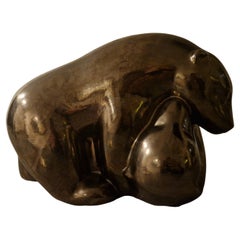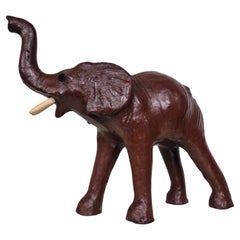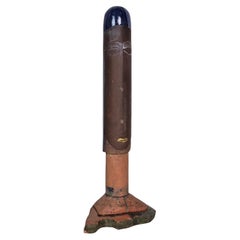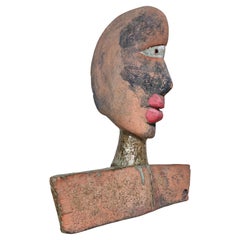Want more images or videos?
Request additional images or videos from the seller
1 of 12
Abstract bronze cello player statue attributed to Yves Lohé, France 1970s
Price:$378.51
About the Item
- Attributed to:Yves Lohé 1 (Artist)
- Dimensions:Height: 9.06 in (23 cm)Width: 3.94 in (10 cm)Depth: 6.3 in (16 cm)
- Style:Mid-Century Modern (Of the Period)
- Materials and Techniques:Bronze,Cast
- Place of Origin:
- Period:
- Date of Manufacture:1970-1980
- Condition:Wear consistent with age and use.
- Seller Location:ECHT, NL
- Reference Number:1stDibs: LU9426237258052
About the Seller
5.0
Vetted Professional Seller
Every seller passes strict standards for authenticity and reliability
1stDibs seller since 2023
23 sales on 1stDibs
Typical response time: 3 hours
Authenticity Guarantee
In the unlikely event there’s an issue with an item’s authenticity, contact us within 1 year for a full refund. DetailsMoney-Back Guarantee
If your item is not as described, is damaged in transit, or does not arrive, contact us within 7 days for a full refund. Details24-Hour Cancellation
You have a 24-hour grace period in which to reconsider your purchase, with no questions asked.Vetted Professional Sellers
Our world-class sellers must adhere to strict standards for service and quality, maintaining the integrity of our listings.Price-Match Guarantee
If you find that a seller listed the same item for a lower price elsewhere, we’ll match it.Trusted Global Delivery
Our best-in-class carrier network provides specialized shipping options worldwide, including custom delivery.You May Also Like
Bronze Statue – Football Player
Located in Saint-Ouen, FR
This bronze statue of a football player, captures a moment of poised action, with the ball held under the player’s arm. The stance, muscular definition, and detailed uniform convey ...
Category
Late 20th Century French Modern Figurative Sculptures
Materials
Marble, Bronze
Bronze Polo Player Statue - Horse Jockey Casting
Located in Potters Bar, GB
Stunning English Bronze statue showing polo player on a bucking bronze
Stands in at over two feet tall so an impressive work
The patina to the bronze is superb and this is ready to d...
Category
Vintage 1980s Figurative Sculptures
Materials
Bronze
An Orientalist Lifesize Figural Bronze Statue, Attributed to Louis Hottot
By Louis Hottot
Located in Brighton, West Sussex
An Orientalist Lifesize Figural Bronze Statue, Attributed to Louis Hottot (French, 1834-1906).
Modelled as a lady in Ottoman dress standing beneath an Eastern style pagoda with minaret. Depicting as if answering a call and stepping forward in greeting.
France, Circa 1890.
This impressive figural group is a rare work in bronze attributed to the Orientalist sculptor Louis Hottot whose oeuvre is more readily associated with what was called ‘bronze imitation’, referring to sculpture in white-metal or, as it is known today, spelter. That this large statue is cast from superior and costly bronze is indicative of its rarity and importance. The Orientalist subject relates to paintings by Jean-Léon Gérôme (1824–1904), Ludwig Deutsch (1855–1935) Gustav Bauernfeind...
Category
Antique 19th Century French Figurative Sculptures
Materials
Bronze
$54,544
H 89.38 in W 23.63 in D 26.78 in
Bronze Statue Hans Peisser and Pankraz Labenwolf, Attributed to, Warrior
Located in Milano, IT
The bronze statue depicts a Turkish warrior with shield and sword. the warrior is shown bare without veils, with a base also made of oval-shaped bronze, acting in a war scene.
Detai...
Category
Antique 16th Century German Renaissance Figurative Sculptures
Materials
Bronze
$6,707 Sale Price
20% Off
H 8.67 in W 5.91 in D 3.94 in
Abstract Bronze on Marble Base, c 1970s
Located in Norwalk, CT
Dramatic abstract form in bronze, contrasting a more heavily patinated shape with a dark bronze section. The work has a sense of movement although it is fixed. Mounted on a heavy bla...
Category
Vintage 1970s American Mid-Century Modern Abstract Sculptures
Materials
Marble, Bronze
Attributed to GUSTAVE LOUIS BUCHET (1888-1963) Bronze statue "L'EFFORT"
By Gustave Buchet
Located in Ixelles, BE
Attributed to GUSTAVE LOUIS BUCHET (1888-1963) Bronze statue "L'EFFORT" or "L'ATHLETE".
Description of the work The statue "L'EFFORT" or "THE MAN LIFTING A STONE" Attributed to Gust...
Category
20th Century Swiss Art Deco Figurative Sculptures
Materials
Bronze
$5,521
H 15.75 in W 29.14 in D 5.91 in
1970s Style Erotic Chromed Bronze Kneeling Nude Statue
Located in Van Nuys, CA
1970s style erotic bronze re-cast of a kneeling nude woman with one hand resting against her wind blown hair, one hand on her leg. Kneeling on a black mirror-finished marble square b...
Category
21st Century and Contemporary American Post-Modern Figurative Sculptures
Materials
Marble, Bronze, Chrome
$1,376 Sale Price
31% Off
H 11 in W 6.5 in D 8 in
Vintage 1970s Brass Penguin Lamp Attributed to Willy Daro
Located in Chicago, IL
Vintage 1970s mounted brass penguin lamp. Possibly made in France by Willy Daro. Last photos show a similar brass penguin lamp signed by Willy Daro. This...
Category
Mid-20th Century Mid-Century Modern Table Lamps
Materials
Brass
1970s Abstract Sculpture Bronze Bird Crystal Base
By Loet Vanderveen
Located in Chula Vista, CA
Abstract sculpture bronze bird crystal hexagon base
in the style of Loet Vanderveen
9 h x 4 diameter
Patina present tiny spots on bird.
Original unrestored preowned vintage conditi...
Category
Vintage 1970s American Mid-Century Modern Animal Sculptures
Materials
Crystal, Bronze
Luigi Pezzato Abstract Bronze Sculpture, Italy 1970s
Located in Naples, IT
Bronze sculpture created by the sculptor and painter Luigi Pezzato. Born in Naples in 1931 , participated since 1951 in various national and international art exhibitions with cou...
Category
Vintage 1970s Italian Mid-Century Modern Abstract Sculptures
Materials
Bronze
More From This Seller
View AllBronze glazed ceramic bear statue, Spain 1940s
By Santa Monica
Located in ECHT, NL
Statue of two bears playing. It is made from ceramic with a copper colored glazing. Made in the 1960s in Spain by Santa Monica pottery. Marked underneath but...
Category
Mid-20th Century Spanish Art Deco Animal Sculptures
Materials
Ceramic
$953 Sale Price
20% Off
Stuffed elephant made from patinated leather, England 1970s
By Liberty of London, Dimitri Omersa, Abercrombie & Fitch
Located in ECHT, NL
Mid century elephant figure. Made from straw covered in leather. Beautifully hand crafted piece with lots of character. The stance of the elephant is powerful with its trunk up in th...
Category
Mid-20th Century British Arts and Crafts Animal Sculptures
Materials
Leather, Straw, Wood
Ceramic totem statue by Dieter Eichelmann, Germany 1980s
Located in ECHT, NL
Hand sculpted ceramic statue. Made by German artist Dieter Eichelmann in the 1980s.
Totem or phallus style abstract figure sculpted from terracotta clay with Polychrome glazing.
T...
Category
Late 20th Century German Post-Modern Abstract Sculptures
Materials
Ceramic, Paint
Abstract ceramic buste by Dieter Eichelmann, Germany 1980s
By Karel Appel, Pablo Picasso
Located in ECHT, NL
Hand crafted ceramic buste. Made by Dieter Eichelmann in the 1980s. Made in the style of Picasso and Karel Appel. The abstract figure has a different look from all angles. The piece ...
Category
Late 20th Century German Post-Modern Busts
Materials
Clay, Paint
Abstract lifesize ceramic sculpture by Dieter Eichelmann, Germany 1980s
By Pablo Picasso
Located in ECHT, NL
Handcrafted ceramic sculpture. The sculpture is made from several tiles that form a human figure. The tiles are fixed to a wood back.
Dieter Eichelmann
Born: 1946 in Bardenberg -...
Category
Late 20th Century German Post-Modern Figurative Sculptures
Materials
Ceramic, Clay
Abstract surrealist wooden sculpture by Fredrik Weerkamp, Netherlands 1980s
Located in ECHT, NL
Surrealist abstract sculpture made from different kinds of wood. Created by Dutch visual artist Frederik Weerkamp. This sculpture was part of his personal collection.
It depicts a p...
Category
Late 20th Century Dutch Brutalist Abstract Sculptures
Materials
Wood
$622 Sale Price
20% Off



